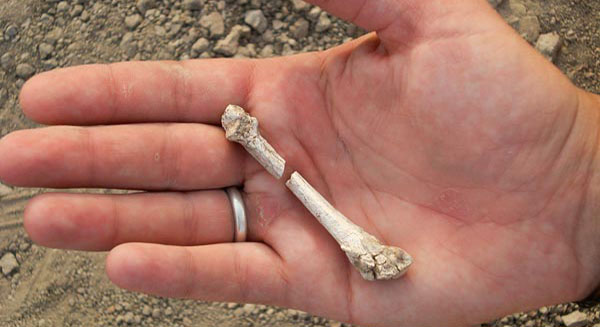| Being able to write requires some of the most complex and precise coordinations in the animal kingdom. |
Through touch we interact with the world around us. Braille allows those bereft of sight to read messages or great works of literature and science. Even palaeontologist, Geerat J. Vermeij, who despite being blind since the age of three, has pursued a successful and distinguished career in the study of prehistoric molluscs.
In daily life our hands are equally important. Part of the reason why we have such large and complex brains is because we need a huge amount of processing power to interpret the data collected by our hands and to control an array of movements from making rude gestures to threading a needle. There is no doubt that our hands and brains have evolved together.
It is likely that this process really kicked off when our hominid ancestors began to use stone tools around 2.6 million years ago. The first simple tools, hammers and crudely hewn choppers, required very little skill to construct and utilise, but the later hand axes and flint arrow heads used by the first members of the genus Homo took a great deal of time and patience to make. It is very difficult to shape a workable but treacherous stone such as flint without being able to make precise and dexterous movements.
 |
| One of the 1.42 million year old hand bones from the Kaitio Site |
Analysis of a 1.42 million year old hominid hand discovered by Fredrick Kyalo Manthi, from the National Museums of Kenya, at the Kaitio site in Kenya, revealed that the third metacarpal bone had a styloid process, a curved projection at the end of the bone.
This is important in a hand that uses tools with dexterity and precision. It locks in place with the wrist bones and assists in resisting the forces from holding tools and applying pressure. Previously the oldest evidence of adaptation to stone tool use came in at 800,000 years old. This new discovery has closed the gap to just over a million years away from the first stone tools, showing that their use had a much more immediate impact on our physiology than previously thought.
In an article published in the Proceedings of the National Academy of Sciences, the researchers wrote that the newly discovered bone 'suggests that an increased reliance on manipulatory behaviours, indicated by the archaeological record early in the Pleistocene, selected for the modern human hand early in the evolution of the genus Homo.' It is an incredible thought that something as simple as our ability to use tools has changed the structure of our hands. Our brains make us unique, yet our hands access the world around us to forge new dimensions and relationships.